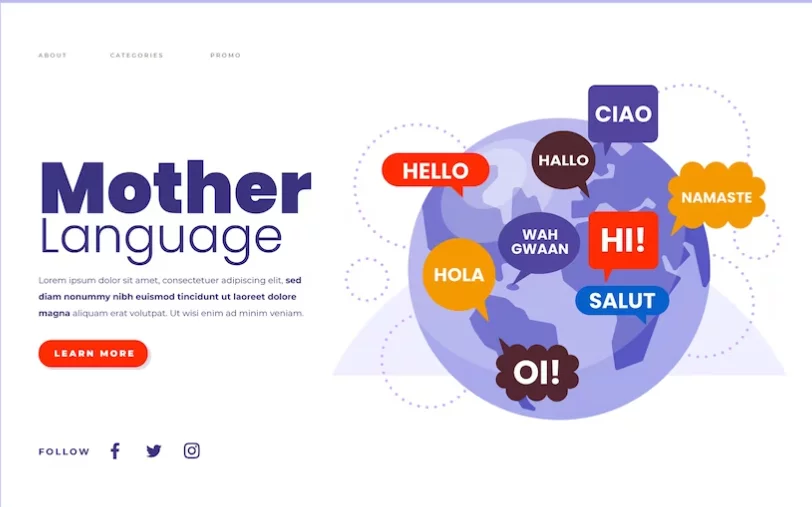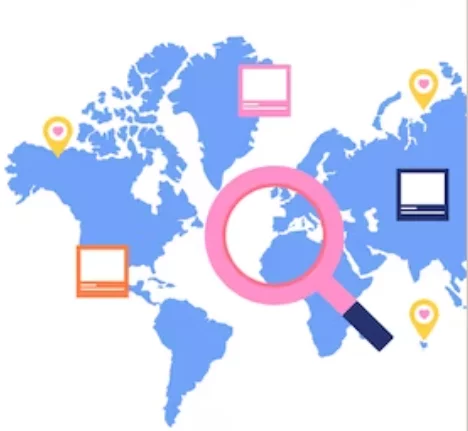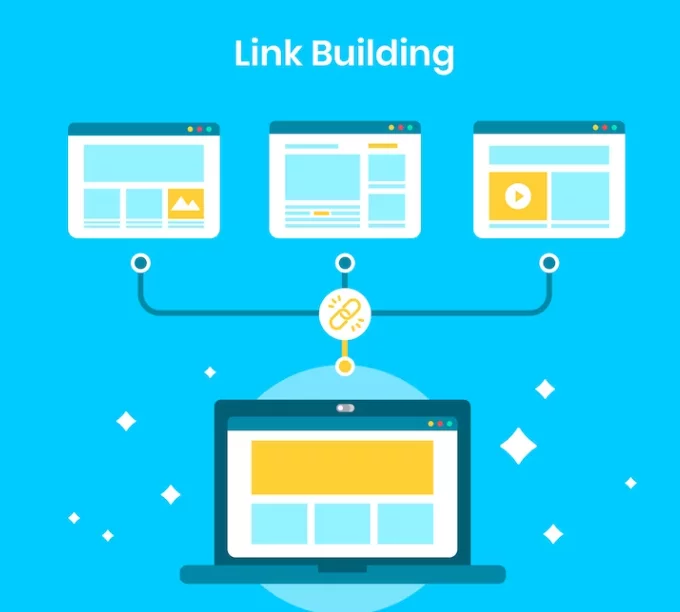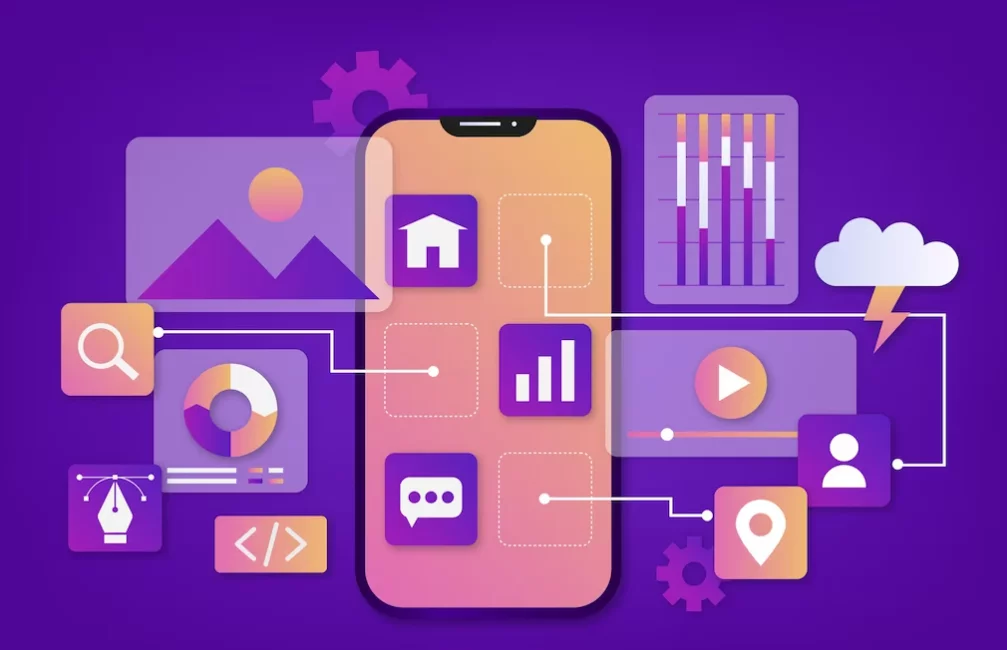Establishing a multilingual online presence presents its challenges. Tasks range from translating websites to tailoring social media and advertising for diverse audiences. However, when delving into multilingual website SEO (search engine optimization), the complexity escalates.
In the process of creating a multilingual website, several crucial SEO considerations come to the forefront. Chief among them is the need to guarantee that users can easily locate the appropriate pages matching their language and location.
Difference between a Multilingual and Multiregional website

In order to understand the possibilities, we must first distinguish between languages and countries. For instance, a German website can target Germany and all German-speaking countries, including residents of Austria and Switzerland. A distinction is therefore made between multilingual websites and multiregional websites.
- A multilingual website is a website that presents content in more than one language. A Swiss company that offers the content of its website in German, French, and Italian is an example of a multilingual website.
- A multiregional website is aimed at users from multiple countries. For example, an English-language website can focus on the United States and England. It is also possible that a website is both multiregional and multilingual.
Concept of Localization SEO
Localization SEO is a subset of search engine optimization that focuses on tailoring your online content and web presence to effectively target a local or regional audience. It goes beyond traditional SEO by considering cultural nuances, language variations, and regional preferences.

Here are the key elements of localization SEO:
- Localized Keywords: Instead of just targeting generic keywords, localization SEO involves researching and incorporating location-specific keywords and phrases that users in a particular area are likely to use in their searches.
- Content Localization: It involves adapting website content to match the language and cultural context of the target audience. This includes translating text, images, and multimedia elements while ensuring they resonate with the local culture.
- Local Link Building: Building backlinks from local or regional websites is crucial for localization SEO. These local backlinks can boost your website’s authority in the specific area you are targeting.
- Local Citations: Ensuring that your business’s Name, Address, and Phone Number (NAP) information is consistent across local directories and review websites is essential. Google and other search engines trust this data to verify your business’s legitimacy and relevance to local users.
- Localized Social Media Presence: Tailoring your social media content and engagement strategies to suit the preferences and behaviors of local users can enhance your visibility and engagement in specific regions.
- Geotargeting: Utilizing geotargeting settings in advertising campaigns to reach users in specific geographic areas is a powerful tool in localization SEO.
Multilingual SEO
Multilingual SEO, as the name suggests, focuses on optimizing a website for multiple languages. It aims to make your website easily discoverable by users who speak different languages but might be interested in the same or similar content. Key aspects of multilingual SEO include:
- Hreflang Tags: Hreflang tags, also known as hreflang attributes, are HTML tags that provide search engines with information about the language and geographic targeting of specific web pages. These tags are placed in the head section of your HTML code and play a significant role in ensuring that users find the most relevant content based on their language and location preferences.
- Translated Content: High-quality translations of your website content are essential. Avoid machine translations and invest in human translators who understand the cultural context of the languages involved.
- Language-Specific Keywords: Research and incorporate language-specific keywords that match the search behavior of users in each target language.
- International Hosting: Hosting your website on servers located in the target countries or regions can improve website loading speed and user experience, positively impacting SEO. Nestify servers are set up in 29 locations to best fulfill your requirements for a multilingual website.
Multiregional SEO
Multiregional SEO focuses on optimizing a website to target specific geographic regions or countries. It’s often used when a business has a presence in multiple countries but wants to maintain a single website. Key considerations for multiregional SEO include:
- URL Structure: Choosing between ccTLDs, subdomains, or subdirectories to structure your website’s URLs for different regions.
- Hreflang Tags: Implementing hreflang tags to specify the language and regional targeting of your content.
- Local Content and Keywords: Creating region-specific content and using keywords relevant to each target region.
- Localized Metadata: Customizing meta titles and descriptions for each region to improve click-through rates in search results.
SEO Tips for Multilingual and Multiregional Websites
1. Understand Your Target Audience
Before diving into SEO strategies, it’s crucial to understand your target audience in each region and their language preferences. Conduct thorough market research to identify the keywords, phrases, and topics that resonate with local users. Knowing your audience is the foundation of successful multiregional and multilingual SEO.
2. Select the Right URL Structure

One of the other factors that play an important role in SEO is the choice of the right domain extension (also known as Top-Level Domain or TLD). There are two types of domain extensions to be distinguished. The first domain extensions that were introduced were called generic Top Level Domains (gTLD). The most known gTLD is .com. In the meantime, the list of gTLDs has increased considerably.
In addition to generic TLDs, you have country-specific domain extensions (Country Code Top Level Domain or ccTLD). These domain extensions use international country codes. For example, the Dutch domain extension .nl. Other examples of country-specific domain extensions are .fr for France and .de for Germany. A country-code TLD is more likely to score well in the corresponding version of Google. For example, you will be able to score with a .nl domain in Google .nl and with a .fr domain earlier in the French version of Google (Google.fr).
Choosing the right URL structure is vital for multiregional websites. You have three main options:
- ccTLDs (Country Code Top-Level Domains): These domain extensions use the international country codes. By choosing a ccTLD, you directly indicate to Google which country the website is intended for. However, there are other ways to indicate to Google which country (s) or region (s) a website is intended for. Google Search Console plays an important role. Use separate domain names for each country (e.g., example.fr for France and example.de for Germany). This can help with local SEO, but it can also be expensive and complex to assess and manage.
- Subdomains: Use subdomains for different regions (e.g., fr.example.com and de.example.com). This provides some localization benefits while keeping a single root domain.
- Subdirectories: Use subdirectories (e.g., example.com/fr/ and example.com/de/). This is the most straightforward approach and can consolidate SEO authority on the main domain.
Choose the structure that aligns best with your business goals and resources.
3. Implement Hreflang Tags
Hreflang tags enhance the user experience by directing visitors to the version of your content that matches their language and location. This means that a French-speaking user in Canada will see the Canadian French version of your page, while a French-speaking user in France will see the French version.
Without hreflang tags, search engines may view similar content in different languages or regions as duplicate content, potentially leading to lower search rankings. Hreflang tags signal to search engines that these variations are intentional and relevant.
When search engines correctly interpret hreflang tags, they can help your content rank higher in particular search results for users in diverse regions and languages. This also leads to increased organic traffic from diverse audiences.

4. Create High-Quality Multilingual Content
Quality content is the cornerstone of SEO. When translating or creating content for different regions, avoid automated translation tools and invest in professional translators who understand the nuances of each language and culture. Make sure that your content is relevant, informative, and culturally sensitive.
5. Optimize Metadata and On-Page Elements
Optimizing metadata and on-page elements is a fundamental component of SEO for multilingual and multiregional websites. This step involves fine-tuning various on-page elements to enhance a site’s search engine visibility and ensure that users find the most relevant content in their preferred language and region. Optimize metadata, such as title tags, meta descriptions, header tags, URL Structure, Image Alt Text, Schema Markup, and Canonical Tags, for each language and region. Ensure that these elements perfectly reflect the content on each web page and include relevant keywords for local search.
By paying close attention to these on-page elements and optimizing them for multilingual and multiregional SEO, you increase the probability that search engines will properly index and rank your content for the right audience. This, in turn, enhances the user experience and drives more organic traffic from users searching in their preferred language and region.
6. Use Local Keywords
Keyword research is essential for multiregional SEO. Use keyword research tools to identify region-specific keywords that users are searching for. Incorporate these keywords naturally into your content, headings, and metadata.
7. Localize Backlinks and Citations

Building a strong backlink profile is considered crucial for SEO. Aim to acquire backlinks from reputable websites in each target region. Additionally, ensure that your business information (NAP – Name, Address, Phone number) is consistently and accurately utilized across local directories and citation sources.
Localizing backlinks and citations is a critical aspect of multilingual and multiregional SEO. It involves optimizing external references and mentions of your website across the internet to align with the specific languages and regions you are targeting.
Actively work on acquiring backlinks from websites that are based in or are relevant to the regions you are targeting. These backlinks should come from reputable sources, such as local news sites, industry-specific directories, or influential blogs within the target region. Local backlinks demonstrate to search engines that your website is relevant and trustworthy to users in that specific area.
Citations are online mentions of your organization’s Name, Address, and Phone Number (NAP) information. It’s crucial to ensure that your NAP data is consistent across all citations, especially for businesses with physical locations in different regions. Consistency in NAP information reinforces trust with search engines and helps local users find your business.
Pay attention to the anchor text used in backlinks. Ideally, the anchor text should include keywords relevant to your content and be in the target language. Additionally, the context surrounding the link should provide clear relevance to the region or language being targeted.
Active engagement on social media platforms specific to the regions you are targeting can also contribute to localized backlinks and citations. Sharing local events, content, and news on social media can encourage users and businesses in the area to reference your site.
8. Optimize Website Speed and Mobile Experience

Optimizing website speed and ensuring an excellent mobile experience are critical aspects of SEO, impacting both user satisfaction and search engine rankings.
Website speed directly affects user experience and SEO. Search engines, especially Google, prioritize fast-loading websites in search results. It is rightly said that slow-loading pages can result in higher bounce rates as impatient users navigate away.
Mobile devices sum up a significant portion of web traffic. Google uses mobile-first indexing, meaning it primarily considers the mobile version of your site for search engine ranking.
9. Monitor and Analyze Performance
Regularly monitor the performance of your multiregional and multilingual website using analytics tools. Track keyword rankings, organic traffic, and user engagement in each region. This data will help you identify areas for improvement and adjust your SEO strategy accordingly.
Implement analytics tools such as Google Analytics, Google Search Console, and other SEO monitoring tools. Ensure that these tools are correctly set up for each language and region, as they will provide valuable data.
These tools give information like: Are users coming from organic search, paid advertising, social media, or other channels? Analyze which sources are most effective for each region and language.
Dive into user behavior data to understand how visitors from different regions and languages interact with your website. Take into account metrics like bounce rate, time on site, and conversion rates. Identify any regional or linguistic differences in user behavior.
Also Read: Best SEO Audit Tools To Boost Your Website’s Performance
10. Stay Updated with Search Engine Guidelines
Search engines frequently update their algorithms and guidelines. Stay informed and updated about changes that may impact your international SEO efforts, and be ready to adapt your strategy as needed
Conclusion
Expanding your online presence to multiple regions and languages can be challenging, but it offers significant growth opportunities. By following these SEO tips and staying committed to providing valuable, localized content, you can enhance your visibility in global search results and connect with a diverse audience across the world. Remember that patience and continuous optimization are key to long-term success in multiregional and multilingual SEO.
FAQs
Do I need separate websites for each region and language?
Not necessarily. You can use subdirectories, subdomains, or ccTLDs to structure your website based on your goals and resources. Each has its advantages and disadvantages.
Is automated translation suitable for multilingual websites?
Automated translation tools are convenient but often produce inaccuracies. For quality multilingual SEO, professional human translation is recommended.
Can I use the same keywords for all regions and languages?
While some keywords may apply universally, it’s crucial to research and incorporate region-specific and language-specific keywords to improve SEO.
Should I create region-specific social media profiles?
Yes, localized social media profiles tailored to each region can help build a more engaged and relevant audience for your multiregional website.



